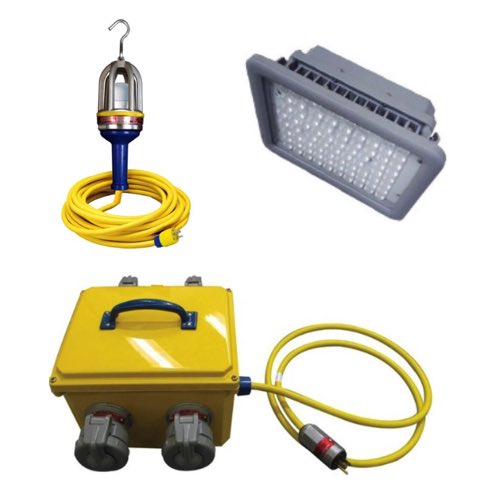Hazardous Location Lighting

Hazardous location lighting fixtures are designed to provide safe, dependable illumination in environments with flammable gases, vapors, dust, or other explosive risks. Such light fixtures are often found in oil and gas refineries, chemical plants, and mining operations, and they are built to withstand the kinds of extreme conditions those industrial settings can present. Quite often, hazardous area lighting offer explosion-proof construction. That means they contain any potential ignition source within a durable enclosure that minimizes the risk of starting an explosion.
Explosion-proof lighting fixtures are designed to work safely in the kinds of hazardous environments that have flammable materials. In the event of an explosion, the hazard presented by an open flame or hot burning materials is contained within the light fixture not allowing it to spread into the surrounding atmosphere. The explosion-proof fixtures are made from materials like stainless steel or aluminum, and are resistant to the harsh environmental conditions that are commonly found in these hazardous locations, including moisture, dust, and corrosive substances. Explosion-proof LED lights can provide bright, energy-efficient lighting while doing the same job a rough service or vapor-tight incandescent or fluorescent fixture would do.
FAQs
Do explosion-proof lights and hazardous location lights installed in electrical equipment provide protection form hazardous materials such as flammable gas and combustible dust?
Yes, explosion-proof lights and hazardous location lights installed in electrical equipment provide protection from hazardous materials like flammable gas and combustible dust by containing sparks and preventing ignition in most extreme environments.
Do hazardous locations lighting solutions provide good enough light quality for petroleum refineries?
Yes, hazardous locations lighting solutions provide high-quality illumination for petroleum refineries, ensuring safety, durability, and energy efficiency while meeting strict industry regulations for explosive and harsh environments.
Why Do We Use AC or DC Power?
The fundamental distinction between AC (Alternating Current) and DC (Direct Current) power lies in the direction in which electrons travel. In the realm of electricity, the movement of charged particles, particularly electrons, constitutes electrical current. DC power is characterized by electrons moving steadily in a single direction, resulting in a constant flow. This steady flow is visually represented as a straight horizontal line on a graph, indicating uniform motion from one side to the other. Conversely, AC power features a dynamic current that varies over time, allowing electrons to oscillate between moving forward and backward. This oscillation is depicted on a graph as a sine wave, demonstrating the current's periodic shift from positive to negative direction and back, which is why it's referred to as Alternating Current.
Frequently observed in various applications, both AC and DC power are employed together. Take, for instance, an industrial control cabinet where AC power is typically provided to energize certain components inside the cabinet. These components are chosen because they are unaffected by the alternating nature of AC power. Subsequently, for more sophisticated devices within the panel that incorporate microchips or processors and necessitate DC power to operate effectively, the AC power is converted to DC power.

